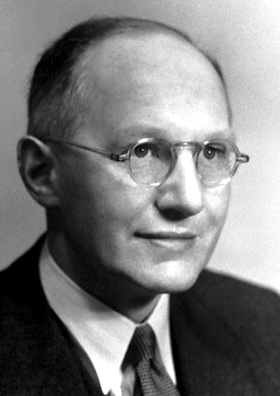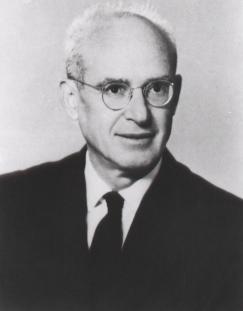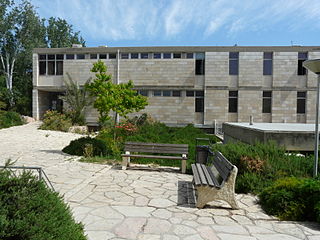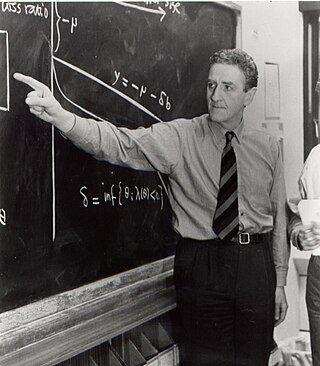
Physics is the natural science of matter, involving the study of matter, its fundamental constituents, its motion and behavior through space and time, and the related entities of energy and force. Physics is one of the most fundamental scientific disciplines, with its main goal being to understand how the universe behaves. A scientist who specializes in the field of physics is called a physicist.

Ernest Thomas Sinton Walton was an Irish physicist and Nobel laureate who first split the atom. He is best known for his work with John Cockcroft to construct one of the earliest types of particle accelerator, the Cockcroft–Walton generator. In experiments performed at Cambridge University in the early 1930s using the generator, Walton and Cockcroft became the first team to use a particle beam to transform one element to another. According to their Nobel Prize citation: "Thus, for the first time, a nuclear transmutation was produced by means entirely under human control."

Brian David Josephson is a Welsh theoretical physicist and professor emeritus of physics at the University of Cambridge. Best known for his pioneering work on superconductivity and quantum tunnelling, he was awarded the Nobel Prize in Physics in 1973 for his prediction of the Josephson effect, made in 1962 when he was a 22-year-old PhD student at Cambridge University. Josephson is the first Welshman to have won a Nobel Prize in Physics. He shared the prize with physicists Leo Esaki and Ivar Giaever, who jointly received half the award for their own work on quantum tunnelling.

Nathan Rosen was an American-Israeli physicist noted for his study on the structure of the hydrogen atom and his work with Albert Einstein and Boris Podolsky on entangled wave functions and the EPR paradox. The Einstein–Rosen bridge, later named the wormhole, was a theory of Nathan Rosen.

George Johnstone Stoney FRS was an Irish physicist. He is most famous for introducing the term electron as the "fundamental unit quantity of electricity".

Moscow Institute of Physics and Technology, is a public research university located in Moscow Oblast, Russia. It prepares specialists in theoretical and applied physics, applied mathematics and related disciplines.

The Dublin Institute for Advanced Studies (DIAS) is a statutory independent research institute in Ireland. It was established in 1940 on the initiative of the Taoiseach, Éamon de Valera, in Dublin.

John Lighton Synge was an Irish mathematician and physicist, whose seven-decade career included significant periods in Ireland, Canada, and the USA. He was a prolific author and influential mentor, and is credited with the introduction of a new geometrical approach to the theory of relativity.

Dennis William Siahou Sciama, was an English physicist who, through his own work and that of his students, played a major role in developing British physics after the Second World War. He was the PhD supervisor to many famous physicists and astrophysicists, including John D. Barrow, David Deutsch, George F. R. Ellis, Stephen Hawking, Adrian Melott and Martin Rees, among others ; he is considered one of the fathers of modern cosmology.

Maria Spiropulu is a Greek particle physicist. She is the Shang-Yi Ch'en Professor of Physics at the California Institute of Technology.
Lochlainn O'Raifeartaigh was an Irish physicist in the field of theoretical particle physics. He is best known for the O'Raifeartaigh Theorem, a result in unification theory, and the O'Raifeartaigh Model of supersymmetry breaking.
Roy H. W. Johnston was an Irish theoretical physicist and republican political activist. He was a Marxist who as a member of the IRA in the 1960s argued for a National Liberation Strategy to unite the Catholic and Protestant working classes. He wrote extensively for such newspapers as The United Irishman and The Irish Times.
Vlatko Vedral is a Serbian-born physicist and Professor in the Department of Physics at the University of Oxford and a Fellow of Wolfson College, Oxford. Until the summer of 2022 he also held a joint appointment at the Centre for Quantum Technologies (CQT) at the National University of Singapore. He is known for his research on the theory of quantum entanglement and quantum information theory. He has published numerous research papers, which are regularly cited, in quantum mechanics and quantum information, and was awarded the Royal Society Wolfson Research Merit Award in 2007. He has held a lectureship and readership at Imperial College, a professorship at Leeds and visiting professorships in Vienna, Singapore (NUS) and at the Perimeter Institute for Theoretical Physics in Canada. He is the author of several books, including Decoding Reality.

The Racah Institute of Physics is an institute at the Hebrew University of Jerusalem, part of the faculty of Mathematics and Natural Sciences on the Edmund J. Safra Campus in the Givat Ram neighborhood of Jerusalem.

John Trevor Lewis was a Welsh mathematical physicist who made contributions to areas including quantum measurement, Bose–Einstein condensation and large deviations theory. He was a senior professor at the Dublin Institute for Advanced Studies (DIAS) in Ireland from 1972, serving as the director of the School of Theoretical Physics from 1975 until his retirement in 2001. He also founded the Communications Networks Research Institute at Dublin Institute of Technology.
Eoin P. O’Reilly is an Irish physicist who, as of 2014, was chief scientific officer at the Tyndall Institute, and a professor of physics at University College Cork. In 2014 he was awarded the Rank Prize in Optoelectronics for his pioneering work on strained-layer laser structures.

Samson Lulievich Shatashvili is a theoretical and mathematical physicist who has been working at Trinity College Dublin, Ireland, since 2002. He holds the Trinity College Dublin Chair of Natural Philosophy and is the director of the Hamilton Mathematics Institute. He is also affiliated with the Institut des Hautes Études Scientifiques (IHÉS), where he held the Louis Michel Chair from 2003 to 2013 and the Israel Gelfand Chair from 2014 to 2019. Prior to moving to Trinity College, he was a professor of physics at Yale University from 1994.

Erasmus Smith's Professor of Natural and Experimental Philosophy at Trinity College Dublin is a chair in physics founded in 1724 and funded by the Erasmus Smith Trust, which was established by Erasmus Smith, a wealthy London merchant, who lived from 1611 to 1691. It is one of the oldest dedicated chairs of physics in Britain and Ireland. Originally, the holder was to be elected from the members of the college by an examination to determine the person best qualified for the professorship. Since 1851, the professorship has been supported by Trinity College. Of the 22 holders of this chair, seven were Fellows of the Royal Society while one, Ernest Walton, won the Nobel Prize for Physics.
Edward Hutchinson Synge was an Irish physicist who published a complete theoretical description of the near-field scanning optical microscope, an instrument used in nanotechnology, several decades before it was experimentally developed. He never completed university yet did significant original research in both microscopy and telescopy. He was the first to apply the principle of scanning in imaging, which later became important in a wide range of technologies including television, radar, and scanning electron microscopy. He was the older brother of distinguished mathematician and theoretical physicist John Lighton Synge.

Nicolás Yunes is an Argentinian theoretical physicist who is a professor at the University of Illinois Urbana-Champaign and the founding director of the Illinois Center for Advanced Studies of the Universe (ICASU). He is particularly interested in extreme gravity, gravitational waves, and compact binaries.















